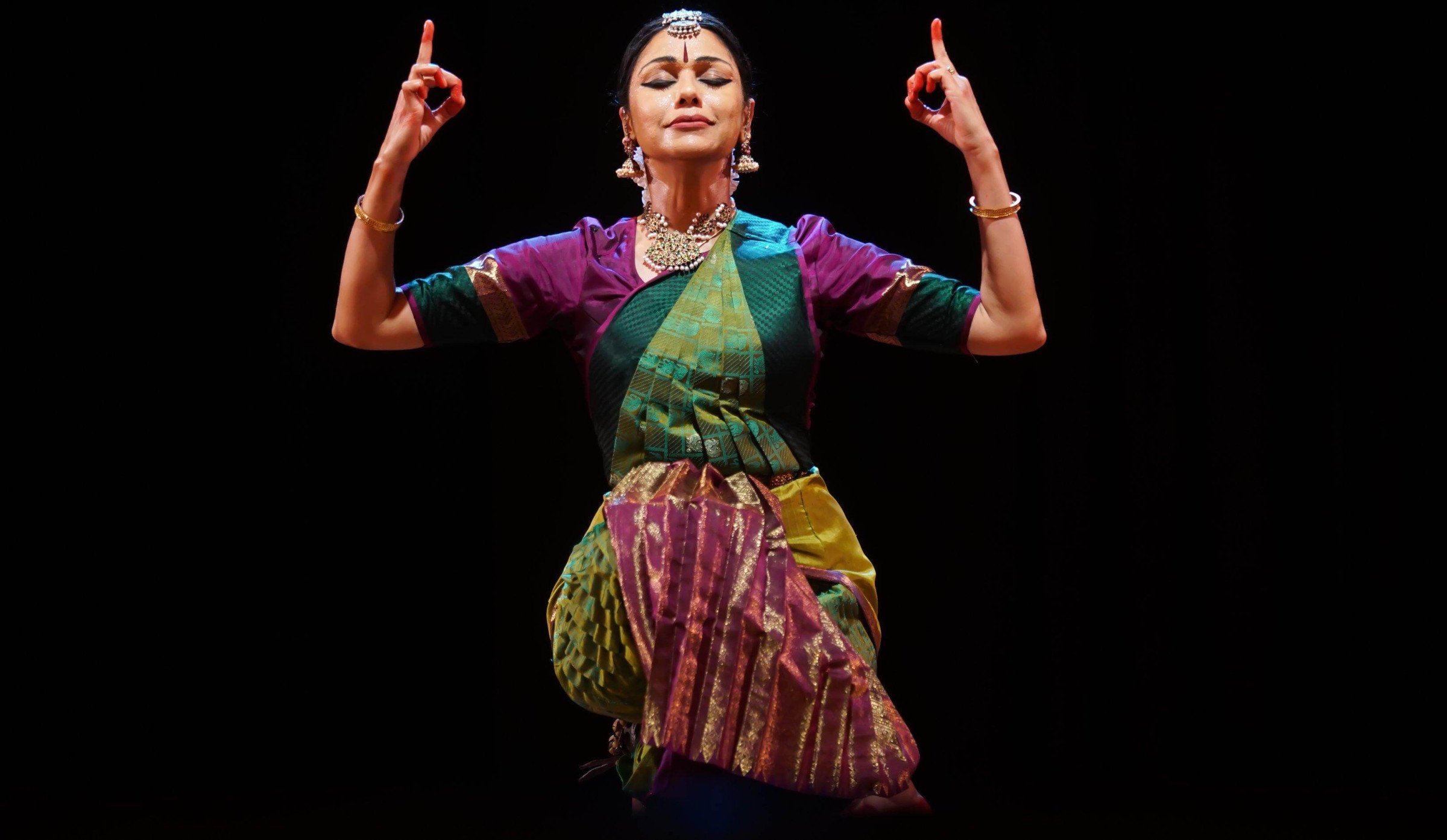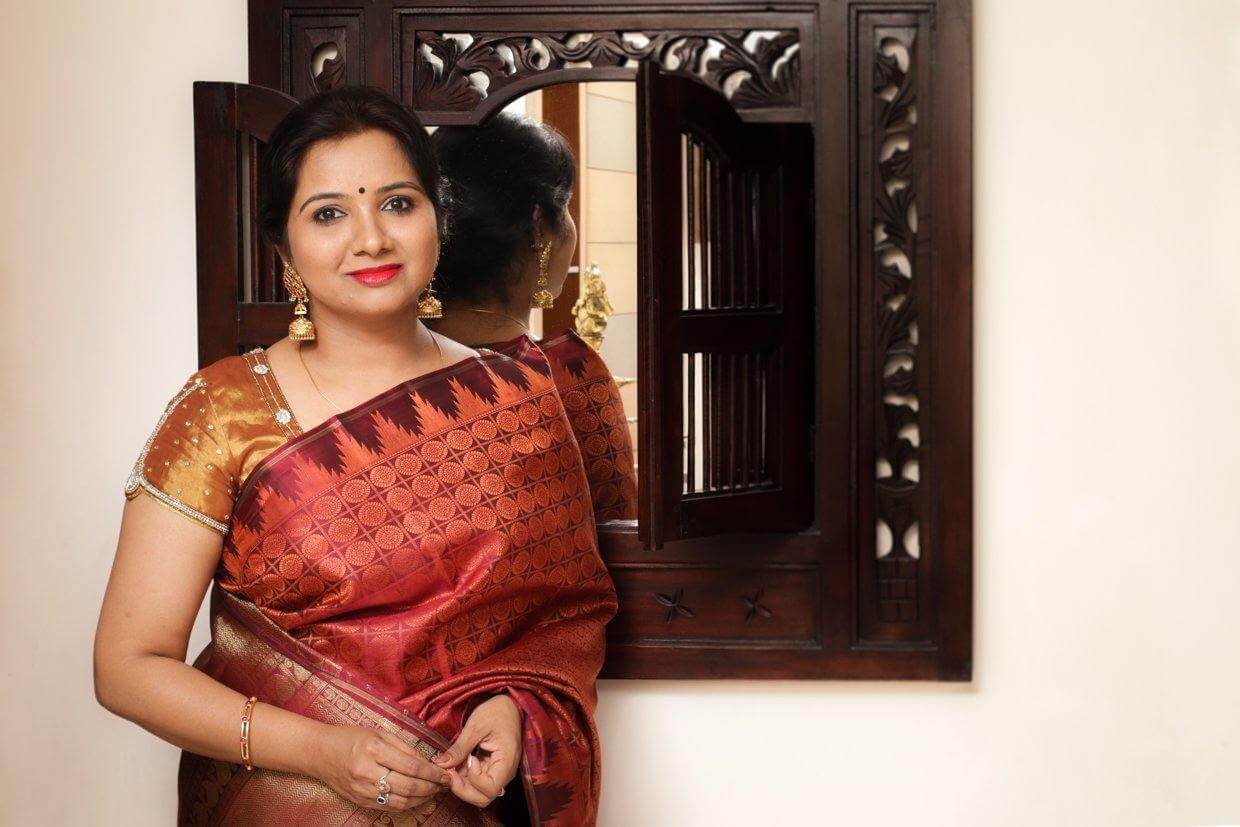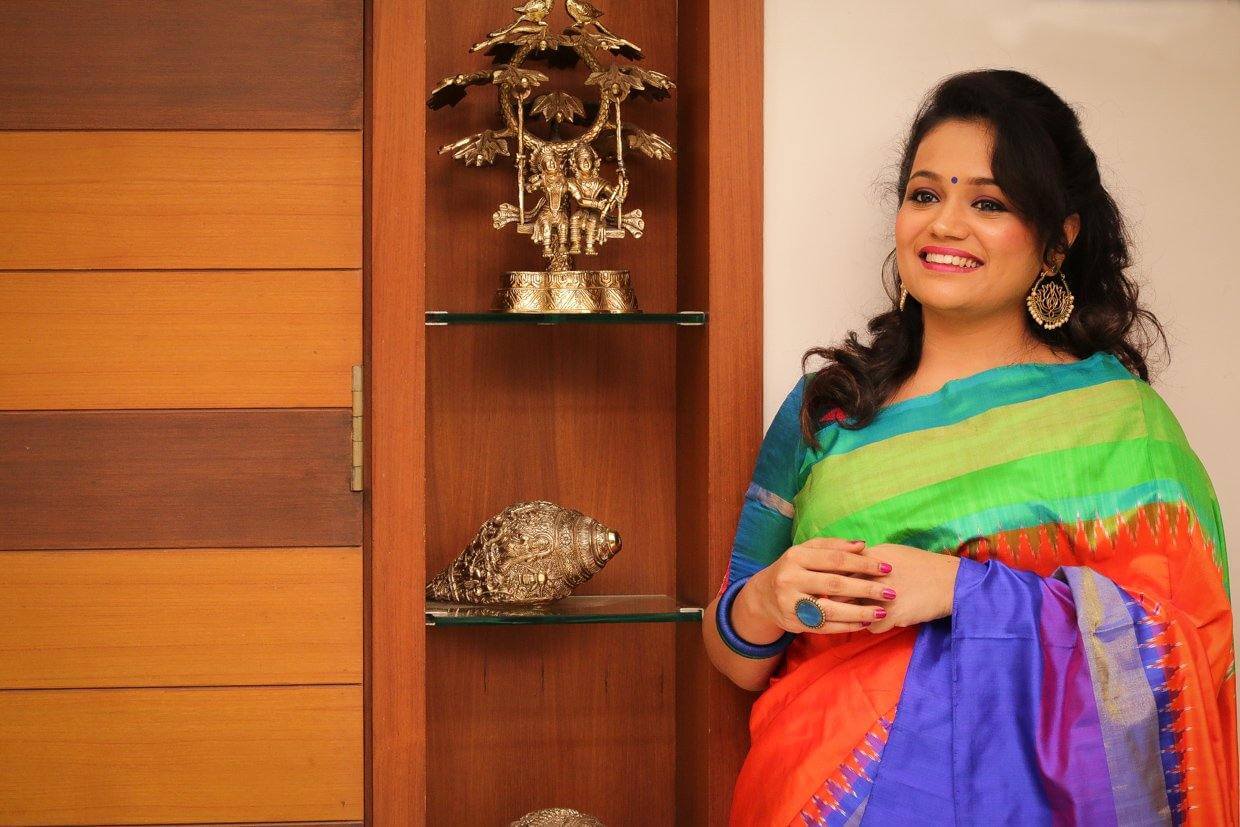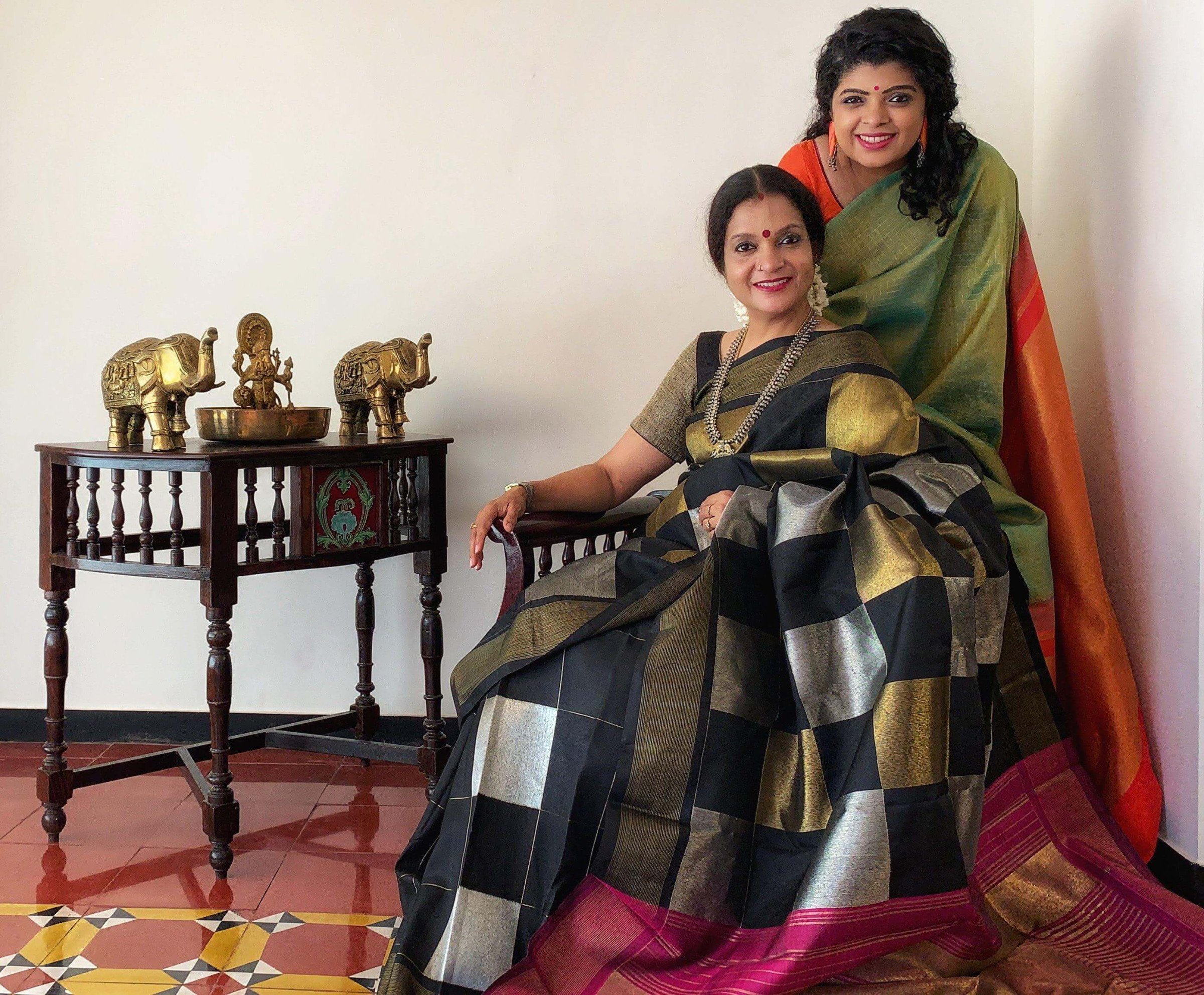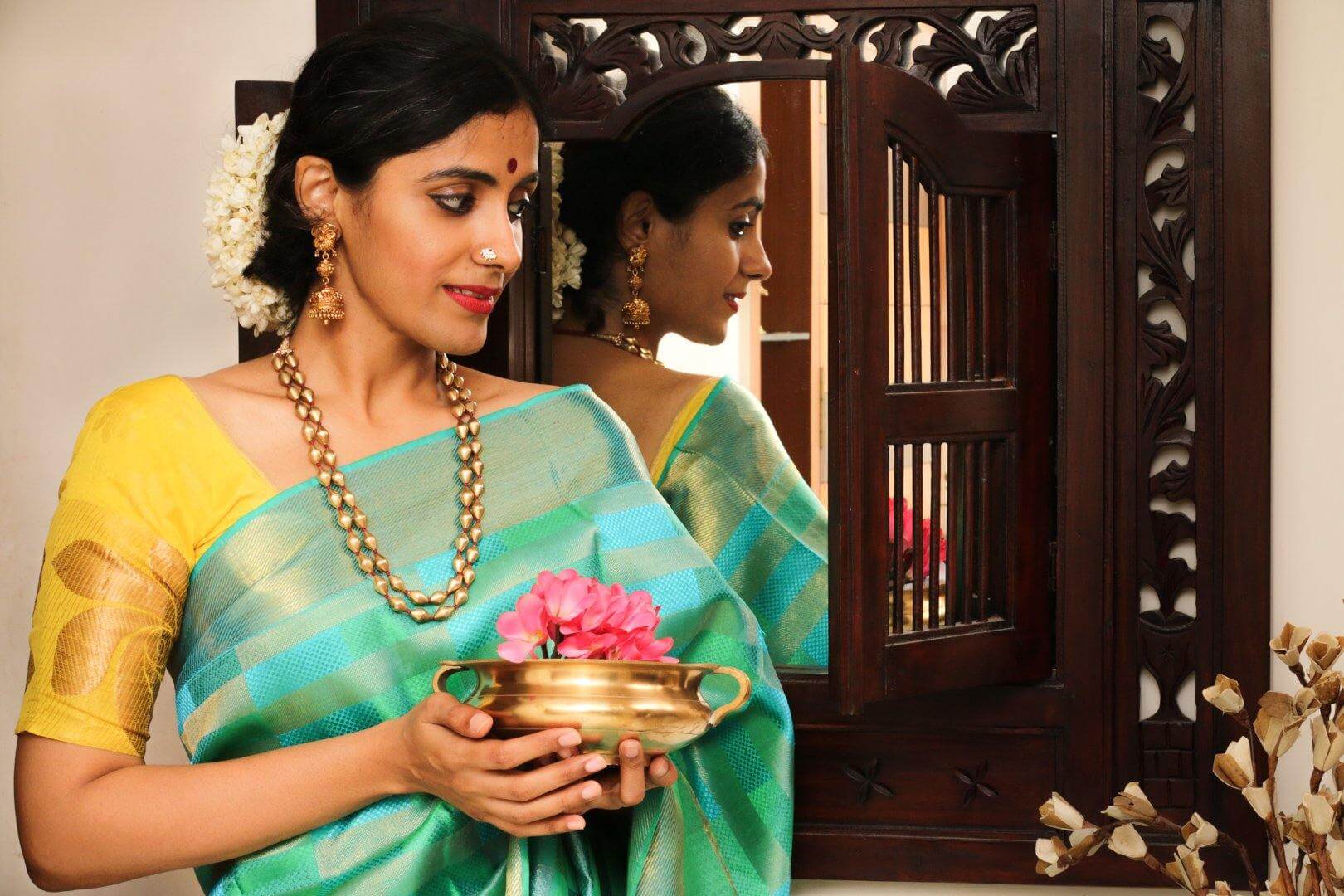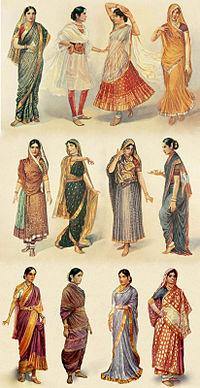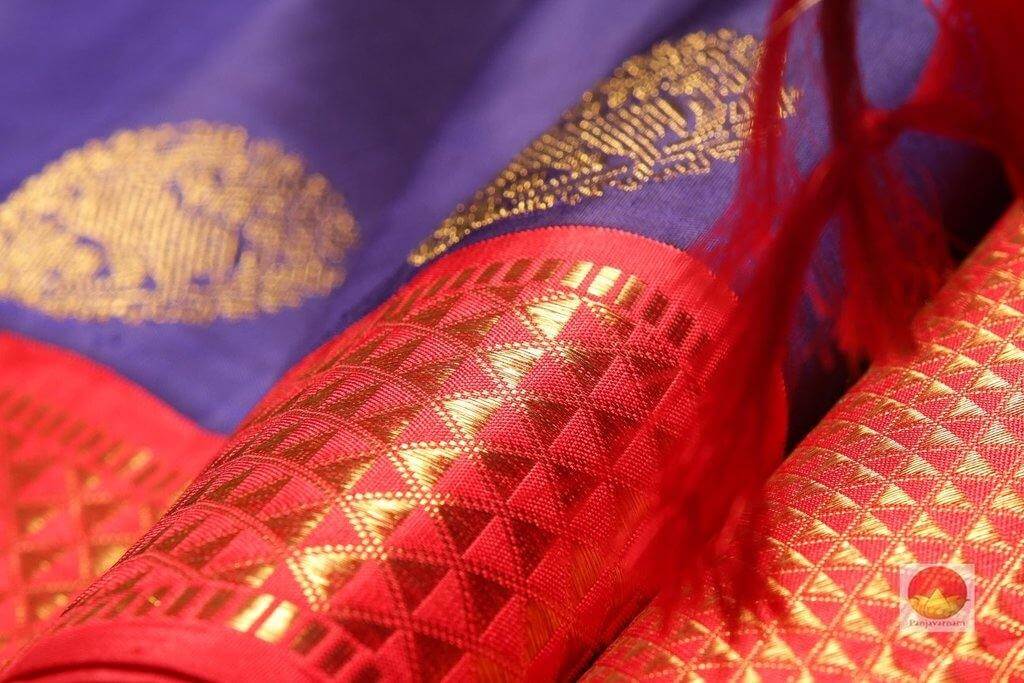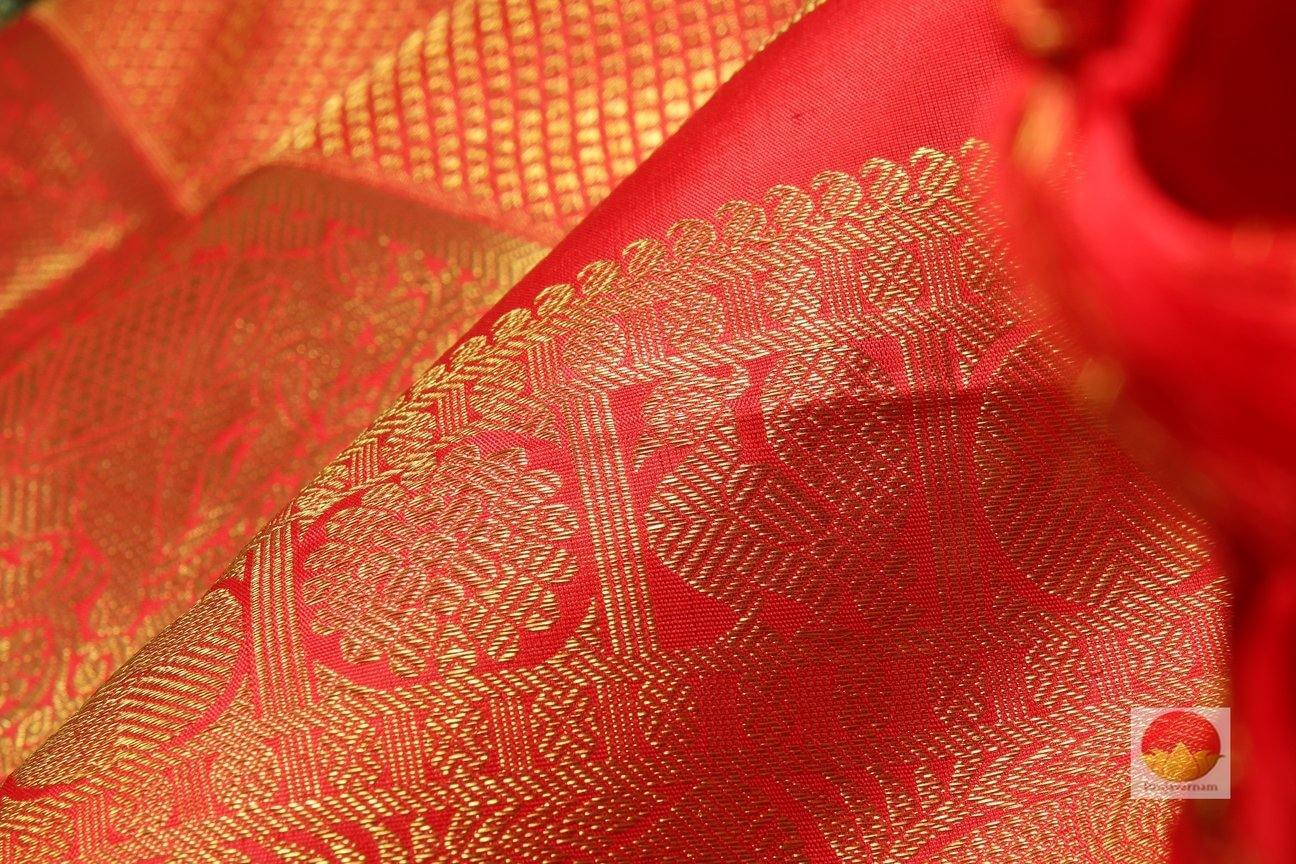We have had 3 Panjavarnam Penns so far, each bringing a different dynamic to our saree conversations but all of them sharing the love for sarees that we have. February’s Panjavarnam Penn needs no introduction. We are sure from all the hustle we have had on our social media pages, you might have guessed that it is none other than Ms Sumitra Selvaraj. But know one thing - putting our conversation down into a 500-word blog is by far the hardest thing we have done. So many stories, so many experiences, all of this, from One Woman!
 Sumitra is wearing a Banarasi Silk Cotton. Click here to see this saree
Sumitra is wearing a Banarasi Silk Cotton. Click here to see this saree
Google her and you will see that she is described as the “Saree Queen”, “Saree Lover” and how her posts influence so many women in so many ways. But talk to her, you understand her love for sarees. It’s what we like to call the “New Age Love”. Read on and you will know what we are talking about.

Sumitra is draped in a handpainted Kalamkari, hand drawn on Cotton. Click here to view more details
It all starts off with us at Panjavarnam eagerly waiting for her to arrive at our place. Sumitra has just landed in Chennai and there is excitement in the air. She arrives at 3 pm, full of energy, despite a hectic travelling time and an even more hectic schedule ahead of her. The moment she enters, we witness a woman full of love, laughter, passion and of course stories. So many stories, so much history, we knew our next four hours was going to be nothing short of an eventful evening.
@sareesandstories is seen wearing a no zari silk in Ananda Blue with Black border and pallu
After a long conversation about Sumitra’s travel plans and rich Malaysian history, we slowly move on to starting the shoot. As we get talking about photos and Instagram, she recounts one particular incident that got her thinking about what a saree meant to her.

Have you seen our Kalamkari Silks? Click here
Sumitra recalls a particularly weird comment in one of her photos where she is posing in a saree with a glass of wine. The comment was supposed to have said: “If you want to have a glass of wine, why don't you change out of your saree” (or something on those lines). She rolls her eyes and says “All these helpful suggestions that come my way are quite incredible. And so it got me thinking about why do you assume that the outside needs to match the inside, that if a woman is in a saree she needs to behave a certain way and if she is in shorts that she is supposed to be behaving in a different way?
In Malaysia, it’s an Indian diaspora - Indians living away from India, who hold on to different bits and parts of their culture that they think makes them Indian. And so they wear sarees to go to events or weddings. But if they wore a saree somewhere else like to work, then everybody looks and goes “what’s the occasion?” (rolls her eyes and shrugs her shoulders). And it always comes back to this whole Why do you need to be a little bit Indian but not so Indian way of thinking/dressing.”

View our collection of Banarasi Silk Cottons here
This got us thinking too! In most places of work or education (in India), there is always this one “Ethnic” Day or “Come to work in a Saree” day. But why so much importance to a saree? Why does a saree have to be portrayed as a representation of our ethnicity and roots? Haven’t we all been asked that question “Hey, any special occasion? Why are you in a saree today?” And so, we spoke more about this.

Sumitra has paired this gorgeous Linen with a batik print blouse, that was once a part of her grandmother's Sarong
Before we tell you what Sumitra told us, know this about her: Sumitra has always been wearing sarees. Since forever! Most of her experiences stem from her wearing a saree. But to her, it’s JUST A WORK WEAR! Before you go judging her off, wait and listen to what she has to say.

This Kanjivaram is paired with another Batik print sarong that is converted to a blouse
“I used to work in the PR industry. One day, as I was walking into a meeting with my first client, my boss tells me “Maybe you could be a little bit less Indian for this meeting?” I was like Why! What makes you think that what I wear impacts the quality of my work in any way shape or form? It just seemed outrageous to me.
That got me thinking. To me, a saree is merely a piece of clothing, WORKWEAR. It is definitely not a representation of my roots, or ethnicity, or my ideas.”

We then had to ask her: Do you identify yourself more as a Malaysian or an Indian?
No identity at all. I don't feel Malaysian because of my various life experiences. I don't feel Indian, because I have a certain Idea in my head about being an Indian and I don't fit that description. So I go with being a human...most days. Some days I wish I were a cocker spaniel and I had someone to feed me and take care of me, pamper me and take me for walks.

Ok, so where does the saree fit into who you are?
Ummm, it gets me to work. I used to think, where would I be if I did not wear a saree one day. And I realised even if I did not wear a saree, I would still be me. So a saree was just a piece of clothing. But I think I am very comfortable in a saree. And in a saree, I feel most like me.

We know what you are thinking. If saree is just workwear, how did @SareesAndStories come about? We asked her that too.
The Instagram page has its roots in my blog which has now been archived. We had just moved back to Kuala Lumpur and I started working in broadcast production again. All of my life I have written - written ghost articles, PR articles, technical documents, speeches, ghostwritten articles for politicians, speeches for politicians. But I have always written non-fiction, very serious, dry, technical stuff. But creative fiction, writing a story, is something I have always wanted to do. My friends would always tell me “You are such a good writer, why not start writing stories?” It's one thing to write up an article about why the price of bananas has increased in Malaysia because of a flood in Indonesia versus writing a story about a spider that lives in a Banana plantation in Africa, for example. It’s two different mindsets. So I thought the first thing I need to do is build discipline. Why? Only because I am, for all intents and purposes, the laziest person you have ever met. I was never consistent with writing. So a friend of mine suggested I start a blog and post once a month. “What shall I write about? I asked her. She looked at me and said, “You wear sarees every day, why don't you write about sarees?”.
I did not have a lot of saree knowledge at that point. It was very experiential. So, I wrote my first blog post about why I wear a saree every day. And then followed one blog post a month for 12 months.
A year later, at work, I had hired a fresh batch of producers and directors for my talk show, they were all under the age of 30, all Malaysians. The first thing my team told me was ”Oh! you wear sarees every day, are you on Instagram?” And I was like “insta whaat”. They took my phone from me, opened up Instagram and asked me what I wanted to call my account. I told them my blog was called “Sarees and Stories” and they named my handle @SareesandStories and they set my account up. After that, they asked me to “stand there, look there, put your hand here, don't smile” and took the first picture.
My first caption was “#sareeoftheday seafoam green Bengal tant”

How do you deal with negative comments on Instagram?
My retort/reply very often depends on the kind of day I have had. Most of the time when I see a nasty comment and if I feel it is directed at me, I will choose to either do something about it or not. At this point, 80% of the time, I don't react. But if it is directed at someone else in the photo with me, I do not keep quiet, I engage.
You have absolutely no right to pick on people you do not know. You may feel you may know me because of Instagram. So comment what you want about me, I will give you that leeway, but u can NOT talk about anyone else from my circle.
Also, I find that people immediately tell off people who are bullies. I think so many of them see sarees and stories as a safe place where they can be themselves and express themselves. If they find judgement, they feel brave to speak up against it.

What is your first memory of a saree? When did you wear your first saree?
My earliest memory is of a look at the world outside through a saree. I remember the pink paisley shapes. It is a very distinct memory but somehow I don't remember very clearly. The story has been told to me so many times that maybe I have formed a mental image of it. But it’s more like a memory. The first saree I wore was definitely one of amma’s. We had visitors over and I was about 7-8 years old. It was a georgette saree and I was just playing around and I wore that saree.
My grandmother had an exquisite collection of some gorgeous Kanjivarams. One of her sarees is a squid ink colour Kanjivaram. It looks like a black but if you hold it to the light, it's a deep purple. It had one line of zari at the bottom and no border. It was one of my favourites of hers. Over the years I have realised that I don't need to hold on to 70 of my grandmother's sarees in honour of her. It is ok if I hold on to only one. One is enough. And if that one goes, that is also ok. I cannot have her memory torn to bits if a fabric withers. Its lived a good life, it has been photographed and documented and has great memories. That is important to me.

Simplifying her love for sarees, here is what Sumitra has to say
I am most comfortable in a saree. It is the most practical piece of clothing to wear, according to me. I wear a saree to work every day. I am very good at my work and I am not ashamed to admit it. And I think the saree is an extension of who I am. It does not define who I am or where I am from. But I love sarees!
New Age Love right?

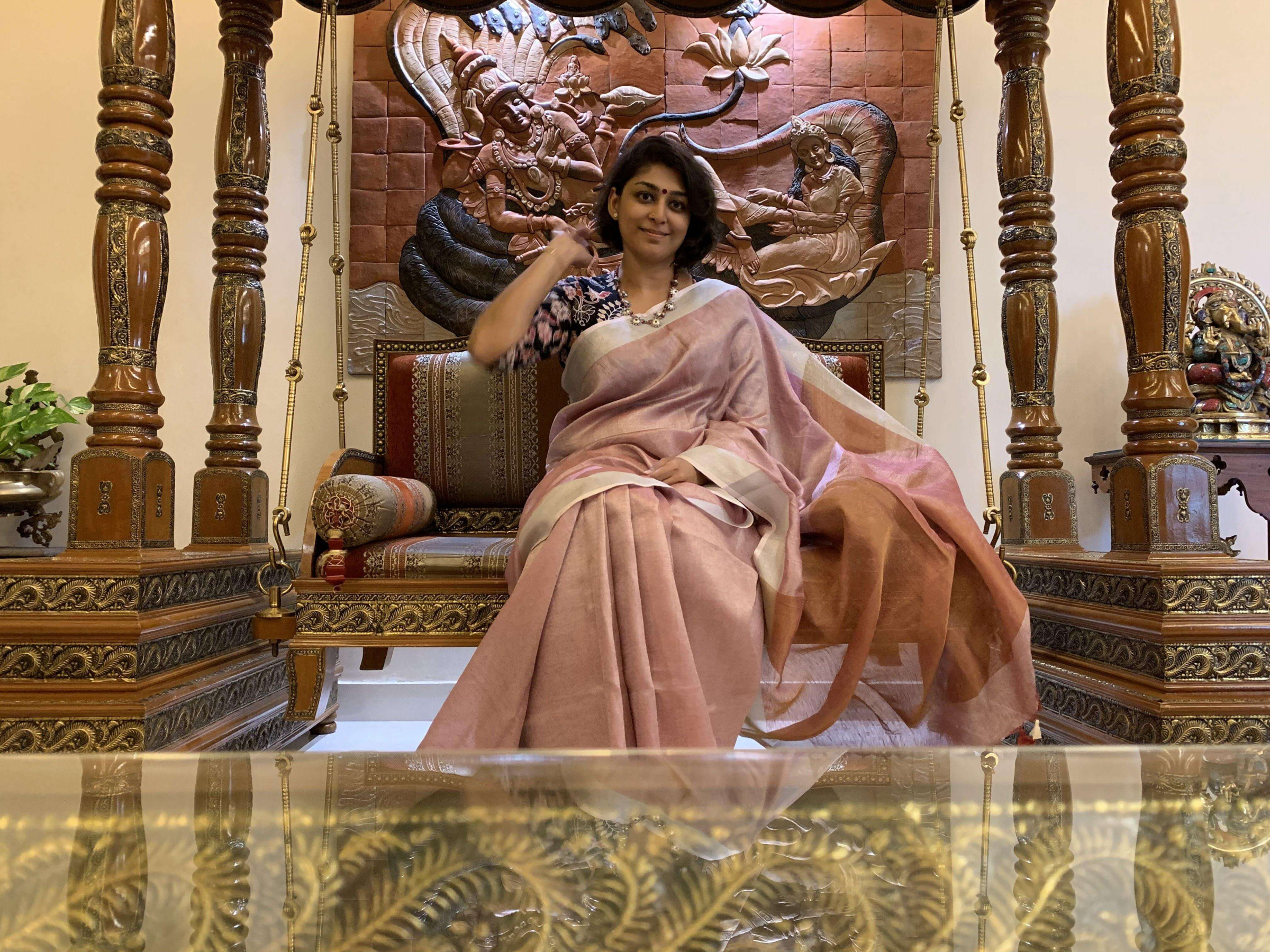

 Sumitra is wearing a Banarasi Silk Cotton. Click here to see this saree
Sumitra is wearing a Banarasi Silk Cotton. Click here to see this saree
